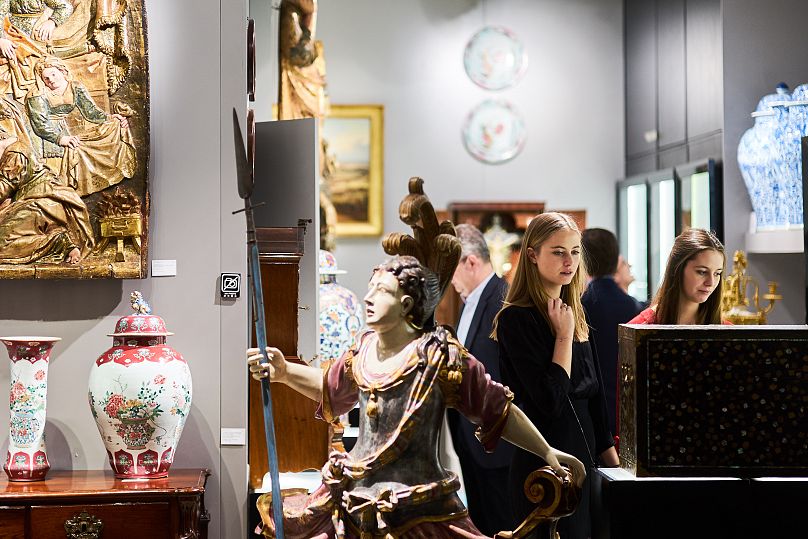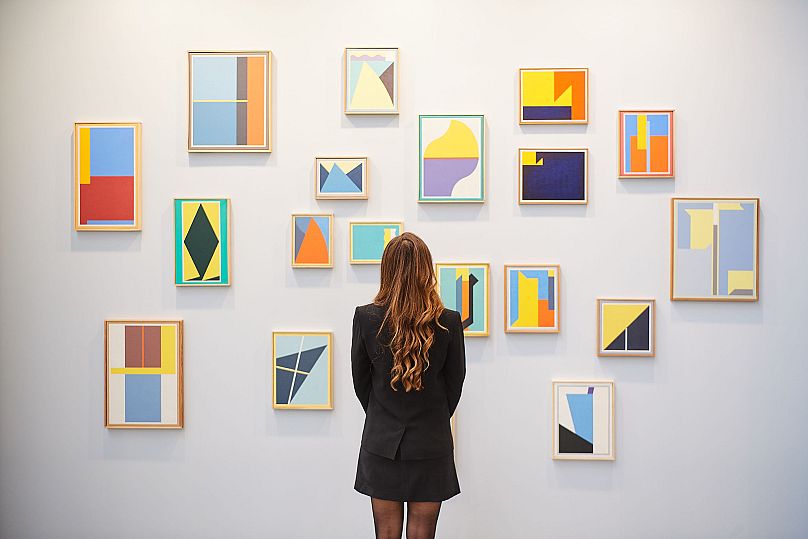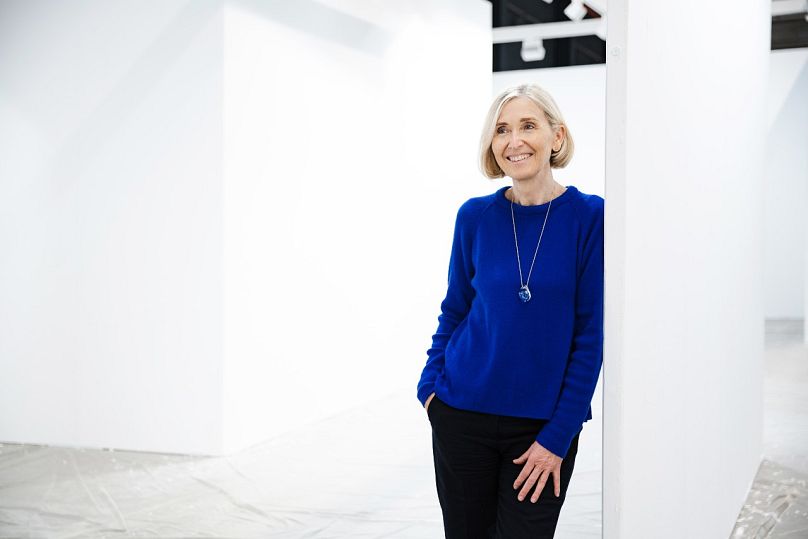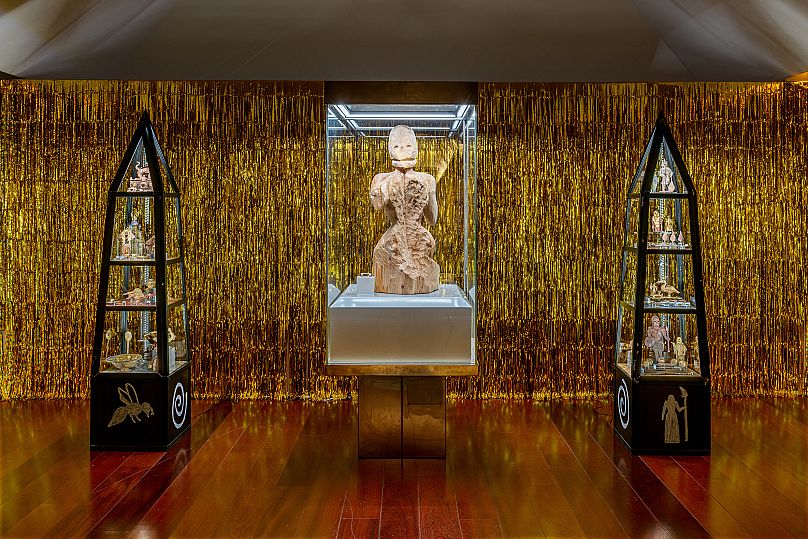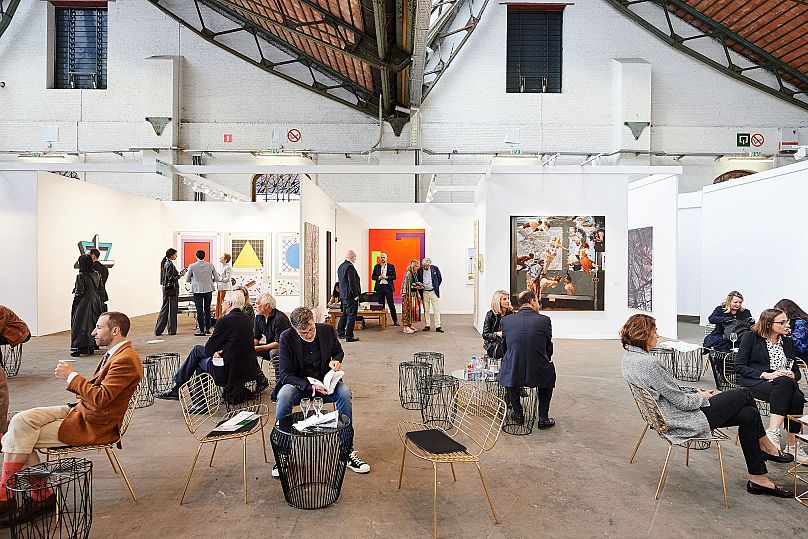The fairs that go ahead in 2022 will do so in a market that has been shaken up by the adoption of new technologies and digital solutions. But with new restrictions looming, nothing is guaranteed.
The art market at the end of 2021 is a complex animal.
Resurgent and revitalised, it is also still tainted by ongoing uncertainty and the threat of closures, postponements and cancellations.
At the top of the market, the world’s leading auction houses have all reported bumper years. The two biggest players, Christie’s and Sotheby’s, both saw their total global sales surpass $7 billion, while Phillips enjoyed the best year in its history, achieving $1.2 billion, up 32% on its pre-pandemic 2019 results.
For other important market players, though, the current situation is less straightforwardly optimistic.
As scientists scrutinise the severity of the Omicron variant and politicians implement new restrictions - or else play a waiting game, holding on to the threat of restrictions yet to come - organisers of high profile physical art events must remain alert.
The European Fine Art Fair (TEFAF) has already decided to postpone its March fair in Maastricht, with the hope that it will take place at an as yet unscheduled date later in the year.
With TEFAF Maastricht having closed early in 2020, before being postponed and then cancelled in 2021, the latest COVID-induced disruption to one of Europe’s biggest art events does not augur well for a smooth year ahead.
Exemplifying the tensions such disruption can cause, dealers set to attend the March fair have been left to question if and when the event will now go ahead. Should it not, TEFAF has stated that exhibitors will each be liable to lose up to €7,500 in participation fees already paid.
As the Chairman of TEFAF's Executive Committee, Hidde van Seggelan, explained to Euronews:
“This has been an incredibly challenging time for both TEFAF and our exhibitors. Until recently, plans for TEFAF Maastricht in March 2022 were progressing, however, the volatile COVID-19 situation meant that a decision to postpone was inevitable. TEFAF has a full-time team of eighteen and it will come as no surprise that the organisation has incurred significant costs to date during the fair planning stages.
Unlike other fairs, TEFAF is a not-for-profit foundation and as such, TEFAF is not able to underwrite the fair. On the basis that TEFAF Maastricht can be moved to later in 2022, all exhibitor payments to date will be rolled over.”
Meanwhile, organisers of other big European art fairs remain hopeful that their events will go ahead as planned. One of the earliest fairs scheduled to take place is ARCOmadrid, from 23-27 February. Following a downsized version of the fair this summer, the 2022 edition is set to return to its normal winter slot, marketed as its 40 (+1) Anniversary. ARCOmadrid’s Director, Maribel Lopez, says that, “as of today we are optimists for a better fair than in 2019 and 2020, in terms of quality, quantity and collectors.”
Cancelled in 2020 and 2021 because of COVID, another event hoping to be well clear of restrictions introduced this winter is Belgium’s premier contemporary art fair, Art Brussels, scheduled to run from 28 April to 1 May.
Anne Vierstraete, the Managing Director of both Art Brussels and sister fair Art Antwerp, says that most of the participants will be galleries that were originally scheduled to attend two years ago.
“We certainly hope to be able to accommodate all of the 160 galleries” Vierstraete explains, “but of course we know meanwhile that the global context requires a lot of flexibility until the last minute, because there’s absolutely no certainty in today’s world.”
The fairs that go ahead in 2022 will do so in a market that has been shaken up by the adoption of new technologies and digital solutions. Much attention regarding the new digital frontiers in art has rightly focused on the dramatic rise of NFTs and the staggering figures some have realised: in a year of notable NFT sales, a peak was reached in March with Christie’s New York sale of Everydays by digital artist Beeple for a record $69 million.
More prosaically, though, digital uptake has permeated the art world to leave a lasting imprint on the way it interacts.
As Vierstraete says, “In no time, auction houses, galleries and also art fairs have caught up with a ten-year delay in doing business through digital means. The whole art sector has become very professional in the digital approach and has also become very present on social networks.”
ARCOmadrid’s Lopez says it is beyond doubt that “communication through digital platforms has changed some of our relationships in work, art and life. That is what will stay, and change forever some aspects in art connections…” One upside of this, Lopez adds, is that improved online content means collectors are now better informed and can engage with an artist’s work on a “deeper” level than before.
Picking up on the same theme, van Seggelan points out that whereas before the pandemic “art fairs were “one week wonders” that drew global collectors to key international hubs” they have now been “fast-tracked fairs into becoming 365 content hubs, sharing engaging and informative insights that draw in and educate collectors all year round.”
Vierstraete notes that digital solutions have enabled galleries to become more global in their outreach, making “sales to new contacts, especially in Asia where the percentage of millennial art buyers increased significantly…” However, she also stresses that such remote engagement has “proved how difficult it is to establish a relationship of trust with these new buyers, and to retain them over the longer term.”
Despite the new digital opportunities to connect, Vierstraete concurs with other commentators in saying that collectors have generally avoided risk during the pandemic, buying work by “artists they already follow” from galleries that are “already known to them.” As a result, Vierstraete adds, “the pandemic has made it tougher to make sales for emerging artists.”
Ilaria Bonacossa, the director of Turin’s Artissima, which bills itself as Italy’s most important contemporary art fair, makes the same argument, saying that during the COVID-19 lockdowns, “collectors were buying what felt safe, or artists whose work they had already encountered and had some knowledge about. The launch of new careers was really stopped.”
One reaction to the prevalence of digital offerings, Bonacossa notes, has been a renewed respect for physical reality.
“I feel that the prolonged digital experience has made the need for tactile experience take centre field," she says. "So ceramics or textiles are becoming prominent and gaining new attention. A different case can be made for painting, especially figurative painting, that is receiving media and market attention because of its reliability and long term guarantees. In all historical moments of crisis – like in post-war Europe or after the 1929 crash – painting has achieved unprecedented success. You need a safe economic situation to be experimental.”
Not surprisingly, the art fairs canvassed by Euronews all stressed the unique quality of being able to view artwork in person, as well as the congenial, collegiate experience of bringing together artists, gallerists and collectors under the same physical roof.
Making that point, TEFAF’s van Seggelan says, “We believe there is enormous pent-up demand for collectors to gather for physical fair experiences and anticipate high volume and value sales when they do. There will naturally be some apprehension about the global COVID-19 situation, but I expect fairs to respond with more intimate VIP events, timed entries, and diligent protocols to offer reassurance to their communities of exhibitors and collectors.”
Moving forwards, Vierstraete suggests that Art fairs "will be hybrid events; they will continue to be essential as places of physical market, networking and experimentation but coupled with an online offer.”
That statement might also be read as a description for the wider market, though with the “online’ part given increasingly greater emphasis. Even so, direct engagement with art remains important.
“The way one experiences art will remain essential” Vierstraete argues. “I believe that people will continue to show interest for artworks that carry a story, an intimate or societal dimension that interacts with those who view the work. And it is precisely this interaction that creates the uniqueness of the experience.”












